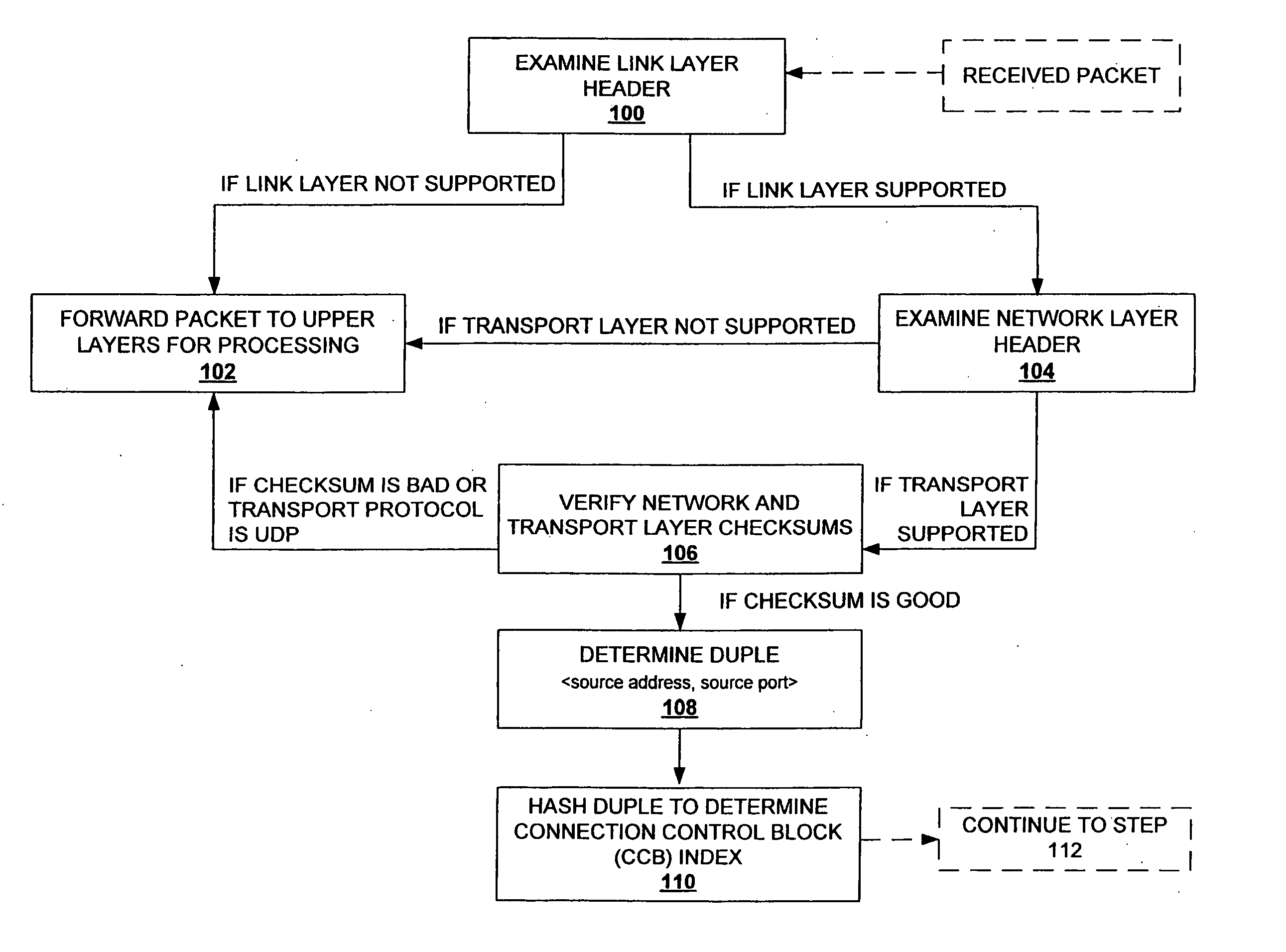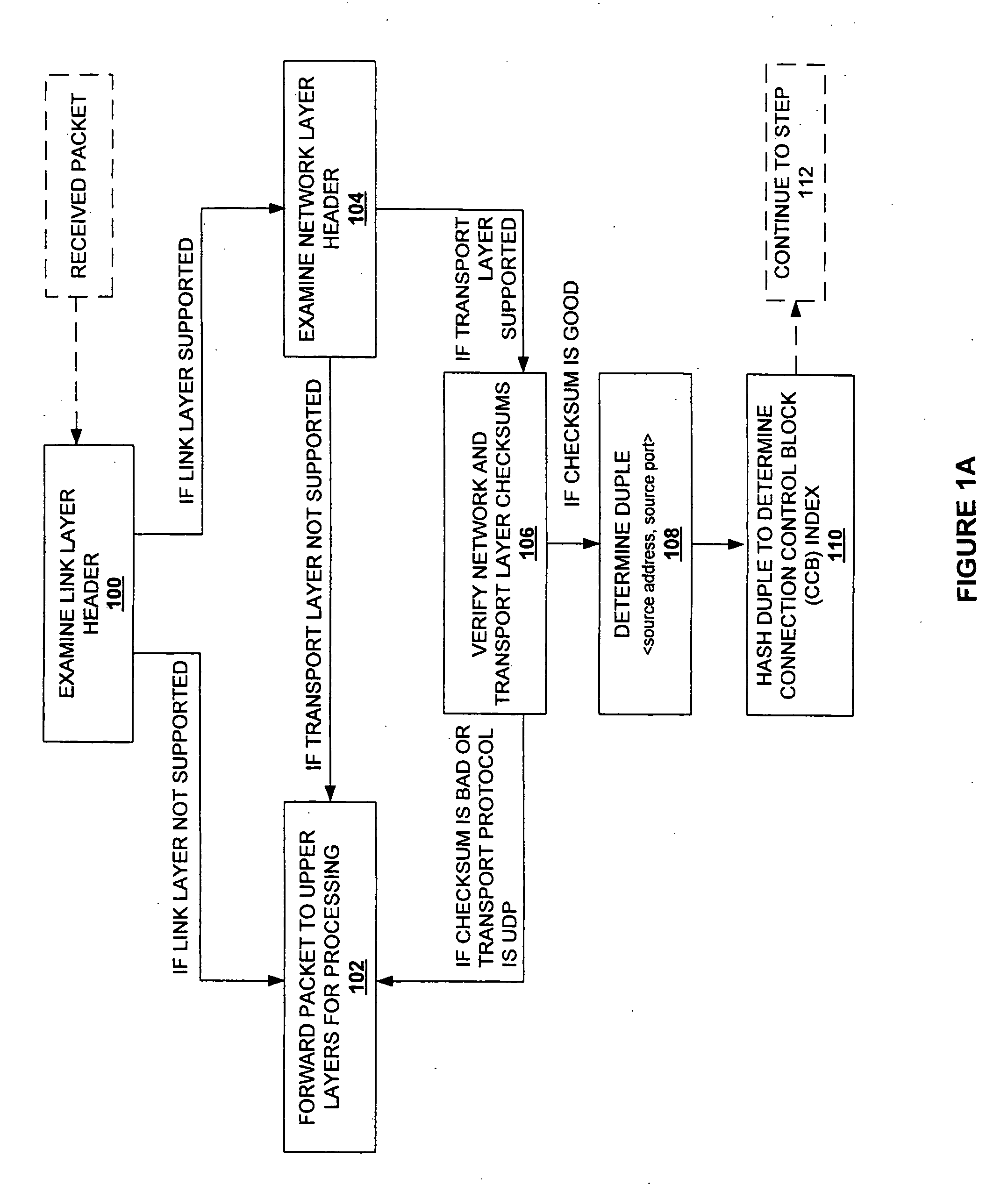Method and system for providing direct data placement support
a technology for direct data and placement support, applied in the field of direct data placement, can solve the problems of increasing the effective cost of a toe implementation, and further restricting the approach, so as to reduce the overhead of cpu processing, reduce the requirement of buffer storage space, and reduce the overhead of data copying
- Summary
- Abstract
- Description
- Claims
- Application Information
AI Technical Summary
Benefits of technology
Problems solved by technology
Method used
Image
Examples
Embodiment Construction
[0018] While this invention is illustrated and described in a preferred embodiment, the invention may be produced in many different configurations. There is depicted in the drawings, and will herein be described in detail, a preferred embodiment of the invention, with the understanding that the present disclosure is to be considered as an exemplification of the principles of the invention and the associated functional specifications for its construction and is not intended to limit the invention to the embodiment illustrated. Those skilled in the art will envision many other possible variations within the scope of the present invention.
I. Hardware Support of Accelerating Packet Reception and Transmission
[0019] Referring now to FIG. 1a, a process flow diagram for the first phase of processing a packet received over a network connection, is shown. Upon receipt of a packet, it is determined whether the received packet meets eligibility requirements for hardware acceleration support ...
PUM
 Login to View More
Login to View More Abstract
Description
Claims
Application Information
 Login to View More
Login to View More - R&D
- Intellectual Property
- Life Sciences
- Materials
- Tech Scout
- Unparalleled Data Quality
- Higher Quality Content
- 60% Fewer Hallucinations
Browse by: Latest US Patents, China's latest patents, Technical Efficacy Thesaurus, Application Domain, Technology Topic, Popular Technical Reports.
© 2025 PatSnap. All rights reserved.Legal|Privacy policy|Modern Slavery Act Transparency Statement|Sitemap|About US| Contact US: help@patsnap.com



